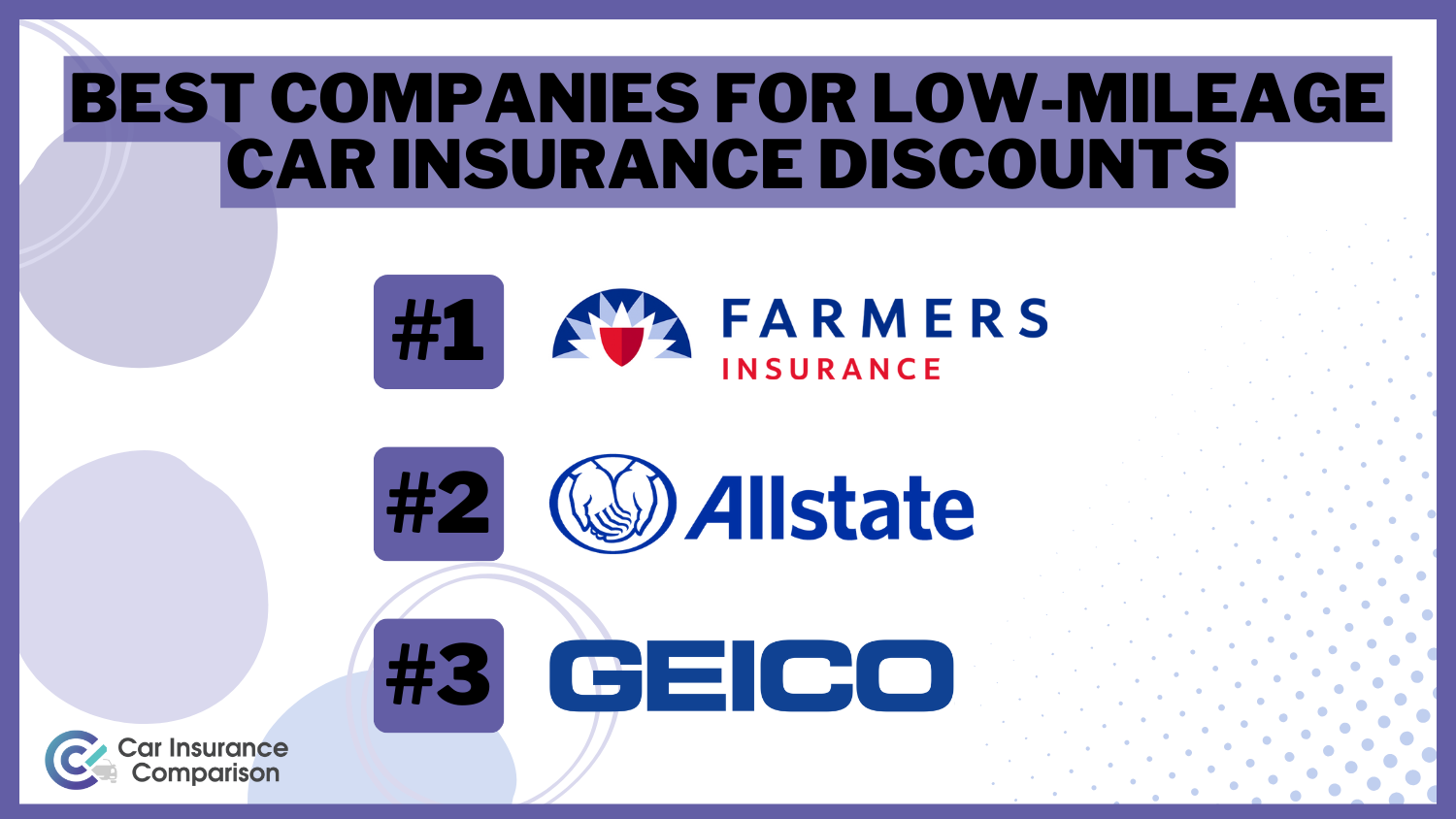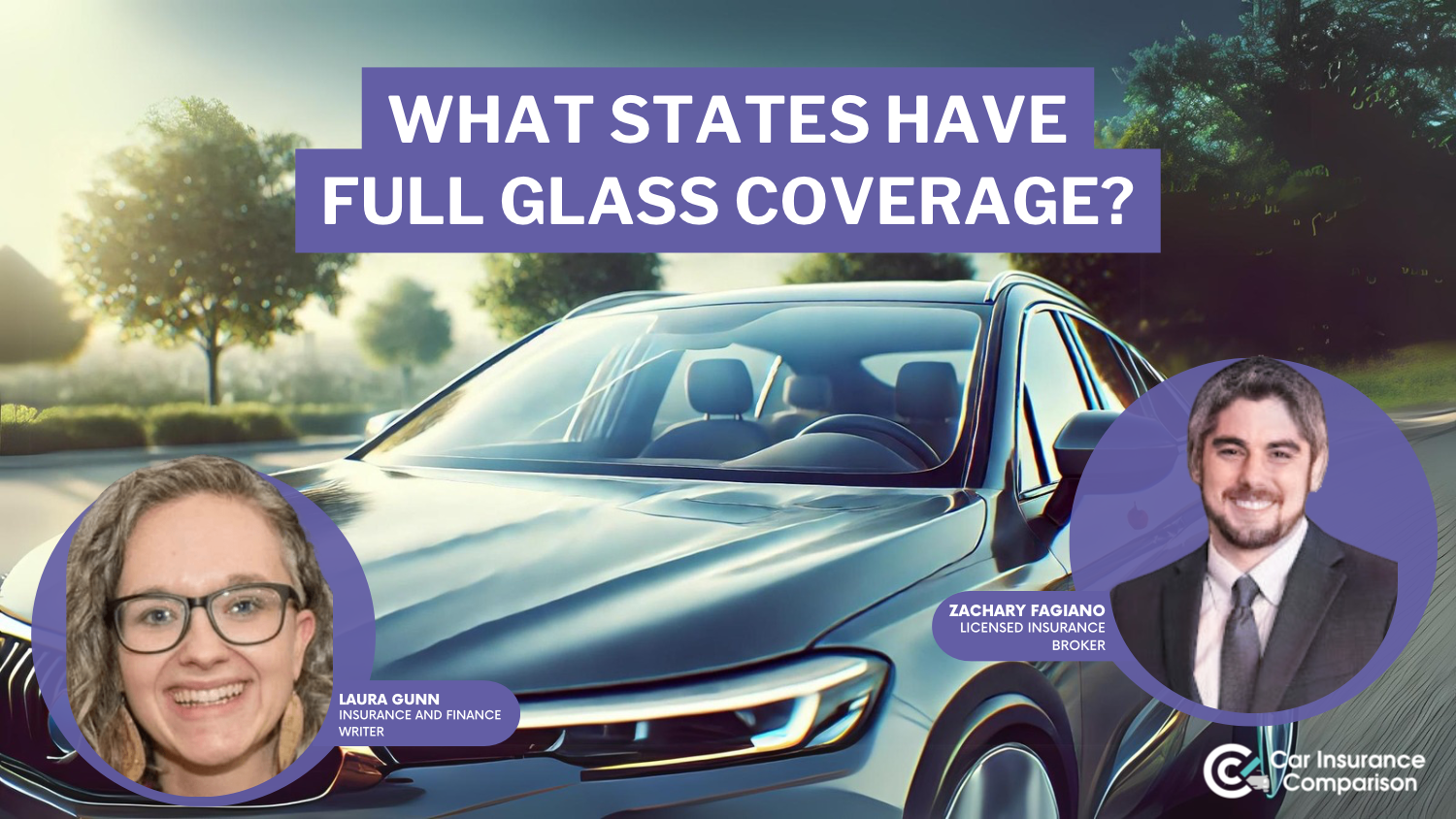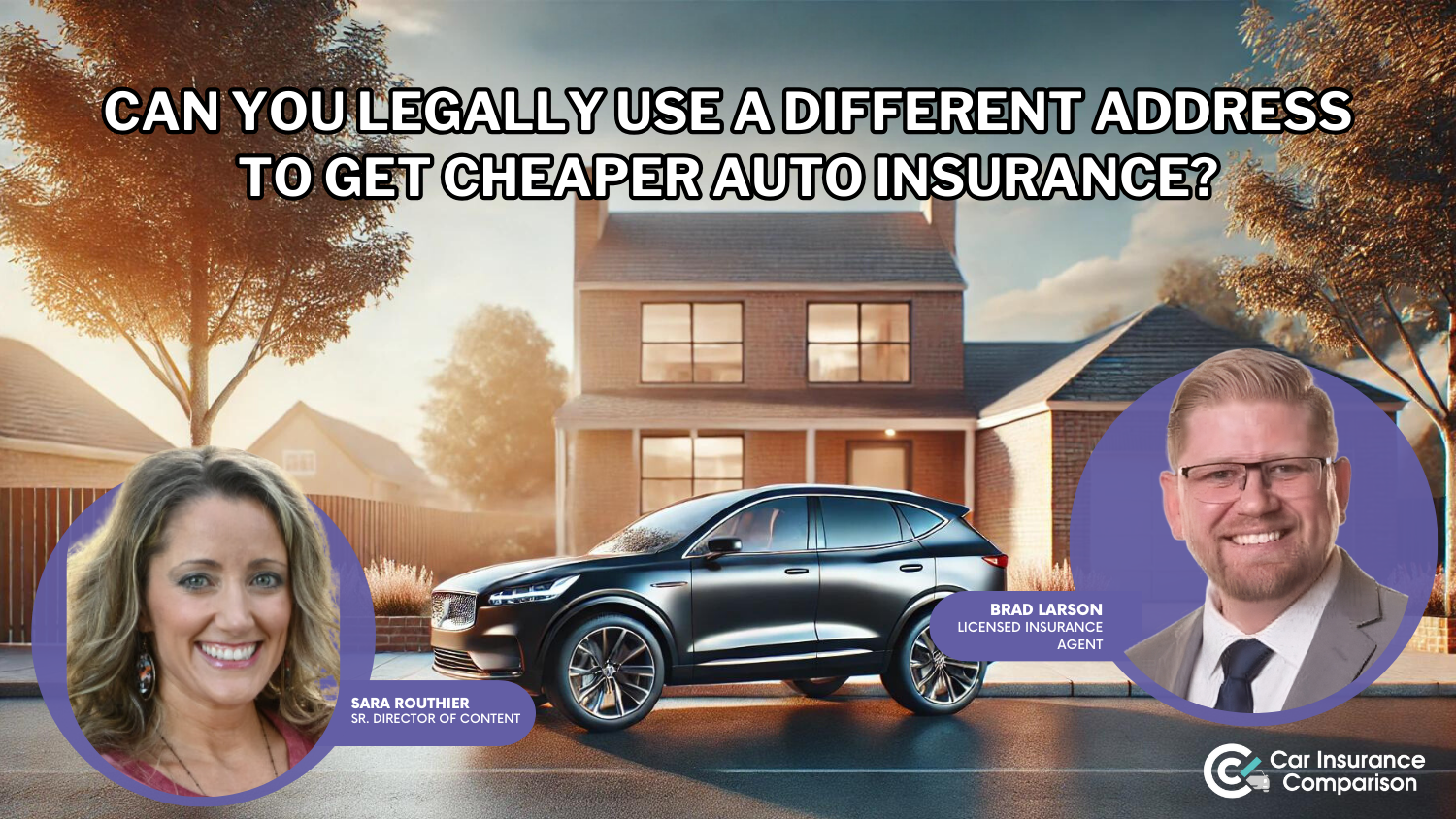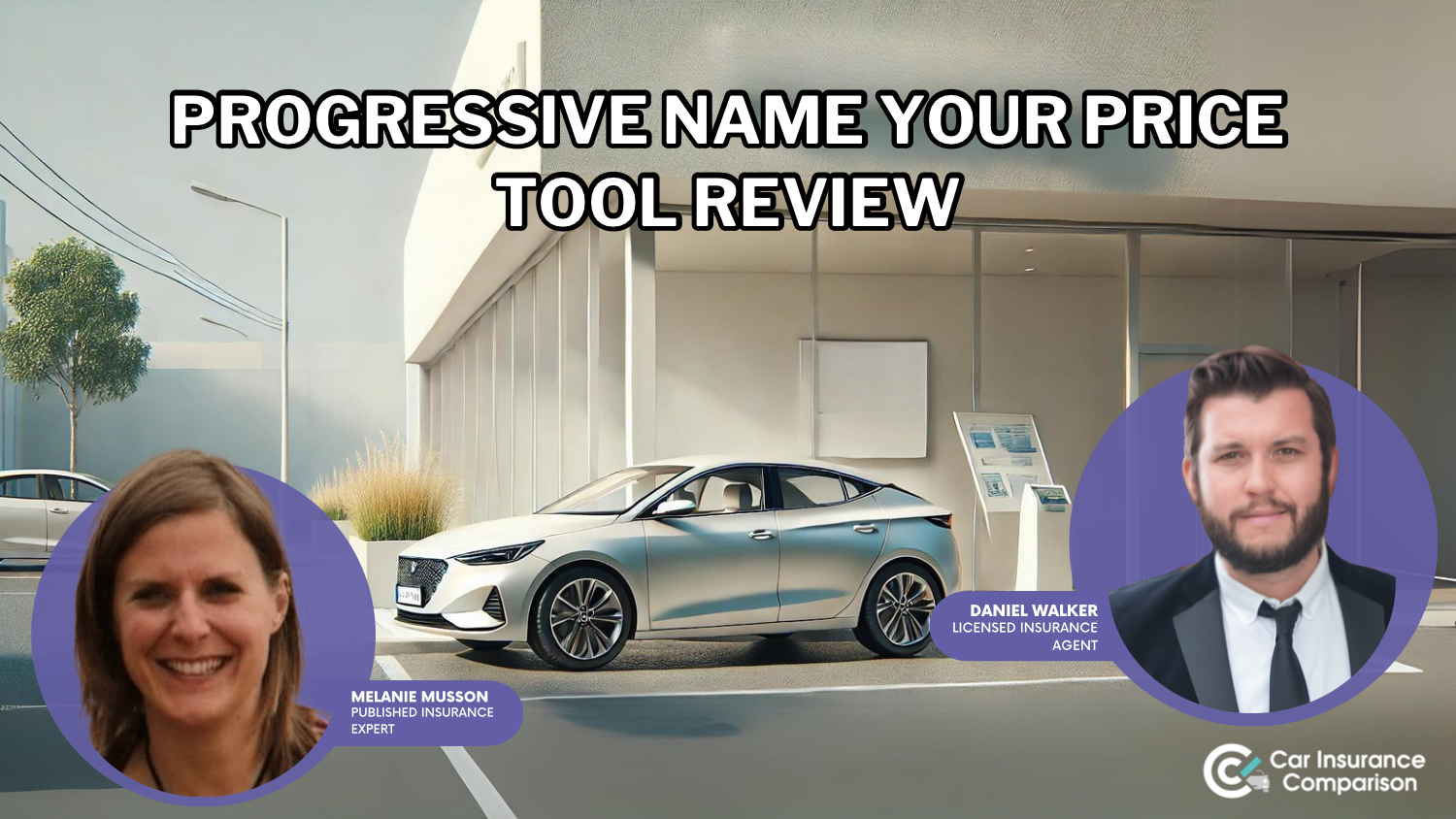How do I find out if a car has insurance?
Find out if a car has insurance by getting the vehicle and policy info from the owner and verifying it through the car insurance company. We offer six ways you can gather the information you need.
Read more Secured with SHA-256 Encryption





Table of Contents
Table of Contents


Professor & Published Author
D. Gilson is a writer and author of essays, poetry, and scholarship that explore the relationship between popular culture, literature, sexuality, and memoir. His latest book is Jesus Freak, with Will Stockton, part of Bloomsbury’s 33 1/3 Series. His other books include I Will Say This Exactly One Time and Crush. His first chapbook, Catch & Release, won the 2012 Robin Becker Prize from S...
D. Gilson, PhD


Licensed Insurance Agent
Michelle Robbins has been a licensed insurance agent for over 13 years. Her career began in the real estate industry, supporting local realtors with Title Insurance. After several years, Michelle shifted to real estate home warranty insurance, where she managed a territory of over 100 miles of real estate professionals. Later, Agent Robbins obtained more licensing and experience serving families a...
Michelle Robbins
Updated October 2024
Driving a car that’s uninsured can have some serious repercussions. Unfortunately, verifying that a vehicle is insured isn’t so easy when you’re not the owner of it. You should have the owner call and verify coverage is active in front of you. Whether you’re borrowing the car, or you’re involved in an accident and there are damages which require auto insurance coverage be active, it’s better to know what you’re up against.
If you really need to verify that a vehicle has active coverage, you may need to get resourceful. You can’t call the insurer directly, but there are alternatives that will protect your interests when there’s a potential for financial loss.
The following are some of the steps you can take to go about getting insurance information when you seriously need it.
Should you also need to compare companies in order to find a policy to protect you and your vehicle, we have a free comparison tool that will let you compare quotes from different companies.
- If you’d like to verify a car is insured, the best option is to ask the vehicle owner directly for proof of active coverage
- When reviewing documentation provided by the vehicle owner, don’t assume coverage is active
- While the Drivers Protection and Privacy Act does protect personal information, you’re free to ask for insurance information through the state motor vehicles agency if you were involved in an accident with the vehicle
Scenarios Where You Might Need Insurance Information
You don’t need to check if someone’s car is insured every day. There may be days, however, where verifying insurance could really save you a huge financial hassle down the line.
Here are some of the most common scenarios where the average person or entity would need to find out if a car has insurance:
- You’re borrowing a friends car and don’t have insurance of your own
- You’re in the middle of a divorce and want to be sure that your spouse is keeping coverage active on the car that’s registered in both of your names
- You own a small business and have employees drive their own cars in the course of employment
- You’re an administrator at a school and need proof of insurance for parents to drive for field trips
- You’re involved in an accident with the driver and want to verify the insurance information provided is valid
Free Insurance Comparison
Compare Quotes From Top Companies and Save
Secured with SHA-256 Encryption
Step One: Verifying Coverage Through the Owner
The easiest way to see if a car is insured is to ask the owner directly.
If you trust the owner, you may be able to just trust that the proof of insurance or declaration’s page provided represents coverage that’s active.
Unfortunately, you might not be able to trust that these papers are really valid if you’re not close to the vehicle owner or if they’d benefit from being dishonest.
This is especially true in the event of an automobile accident where you don’t know the motorists involved. If it were simply the case where you were borrowing the car from a friend, chances are you will be able to trust them. However, someone could lie to you about their vehicle being insured, when in fact they don’t have an insurance policy active at the time of the accident.
Step Two: Checking the Validity of the Coverage Provided
When you ask the owner for insurance information, you’ll need the name of the company, the license plate number, and the policy number.
If you’re not confident that the ID cards or other policy documents are valid, you should ask the owner to call the insurer.
The insured can authorize the company to give you information on the policy so that you know what is on the policy, who’s covered, what vehicles are listed and what to do when said coverage expires. As mentioned above, this can come in handy if you’re borrowing a friend’s vehicle, but it’s going to be a little different if you’re asking for the information because you’re filling out an accident report.
When asking for the vehicle identification information, especially if it’s because the vehicle was involved in an accident, make sure the other driver knows it’s for insurance purposes. If it’s for any other situation, chances are the owner of the vehicle will know why you’re asking.
Step Three: Checking Status of Insurance on a Vehicle That You Own Through the Insurer
If you’ve co-signed a loan on a vehicle or you’re the registered owner of a vehicle with your estranged spouse, you may be able to verify a car’s covered all by yourself.
This is because you have an insurable interest in the car. If you know what company the car is insured with, the easiest way to see if there’s liability coverage is to call the company directly.
If you’re not listed on the policy as a named insured, you might have to provide proof that you’re an owner of the car before the company representative will be willing to tell you the policy is canceled or active.
To prevent this from becoming a problem, you should require that you’re a named insured or a loss payee on the policy when you agree to be on a loan or title. This gives you power over being able to see the information on the auto insurance policy at any time, even after a separation.
Read more:
Free Insurance Comparison
Compare Quotes From Top Companies and Save
Secured with SHA-256 Encryption
Step Four: Checking the Status of a Vehicle That You Own Through the Motor Vehicle Agency
If you own the vehicle and don’t know where the vehicle is insured, you could check to see if insurance is filed with the motor vehicle agency in your state.
Many states allow owners to do this so that they can be sure that they are in compliance with the mandatory insurance laws.
To verify coverage exists, the state must have an electronic verification program in place. This means that real-time insurance information is reported daily.
If the state that you live in has an owner search tool, you’ll need to enter the plate number and VIN to see if coverage has lapsed or needs to be verified. Since each state has insurance requirements, this can be a helpful way to determine coverage and whether or not it’s active.
Step Five: Asking the Other Party For Insurance Information Following an Accident
When you’re in an accident, it’s your right to gather third-party insurance information. This helps make it possible to file a claim in a timely manner.
It’s important that you get as much information as possible to protect yourself.
Here’s an accident checklist showing what you should collect so that your claims adjuster can do their job in investigating the claim:
- VIN of all vehicles
- License plate numbers
- Registered owner’s name and address
- Driver’s license number of operator
- Phone number of driver, passenger, owner, and witnesses
- Insurance company name, policy number, phone number, expiration date
Step Six: Call Law Enforcement or the State
If the driver runs or you’re unable to collect insurance information, you have the right to get information through the police, traffic courts, the motor vehicle agency or your insurer.
An accident is one qualifying event under the Drivers Privacy Protection Act that gives you the right to access insurance records.
Finding out insurance information can be a hassle, but it’s easier when you file a claim. If you’ve suffered a loss, your insurer will try hard to get insurance information. Your insurance provider will want to have their own assets covered, which is why uninsured drivers are universally dangerous. Not only do they pose a risk while driving, insurance companies will sometimes offer special coverage that protects their customers against them.
Claimants who aren’t happy with the service their insurer has provided should start to shop around for coverage. If you’re now concerned about the type of coverage you have, and want to look elsewhere, don’t forget about our comparison tool, which will help you to compare quotes from various companies.
Free Insurance Comparison
Compare Quotes From Top Companies and Save
Secured with SHA-256 Encryption
Case Studies: Verifying Car Insurance Coverage
Case Study 1: Borrowed Vehicle Insurance Verification
John borrowed his friend’s car for a weekend road trip. Concerned about potential liability, he wanted to ensure the car had active insurance coverage.
John asked his friend to call the insurance company and verify the policy’s status in front of him. This step provided John with the necessary assurance that he would be protected in case of an accident.
Case Study 2: Accident Reporting
After being involved in a car accident, Sarah needed to gather insurance information from the other party to file a claim.
She collected details such as the insurance company’s name, policy number, and contact information from the other driver. This allowed Sarah to proceed with the claims process and ensure a timely resolution.
Case Study 3: Vehicle Owner’s Verification
As a co-signer on a car loan, Mark had an insurable interest in the vehicle. He called the insurance company directly to verify if the car was covered.
Mark provided proof of ownership and received confirmation of the policy’s active status. This empowered him to have control over accessing policy information whenever necessary.
Case Study 4: Checking Insurance Status Through Motor Vehicle Agency
Emily owned a vehicle but was unsure which insurance company provided coverage. She utilized the owner search tool offered by her state’s motor vehicle agency.
By entering the license plate number and VIN, she was able to check if the vehicle had active insurance coverage, ensuring compliance with mandatory insurance laws.
Case Study 5: Seeking Insurance Information Through Law Enforcement
When Jessica was involved in a hit-and-run accident and unable to obtain insurance information from the other driver, she exercised her right to access insurance records through law enforcement.
By involving the police, traffic courts, or the motor vehicle agency, she could obtain the necessary insurance details to proceed with her claim.
Case Study 6: Comparing Quotes From Different Companies
Amy wanted to ensure she had the best coverage for her vehicle. She used a free comparison tool that allowed her to compare quotes from various insurance companies. This enabled her to make an informed decision and choose the policy that best suited her needs.
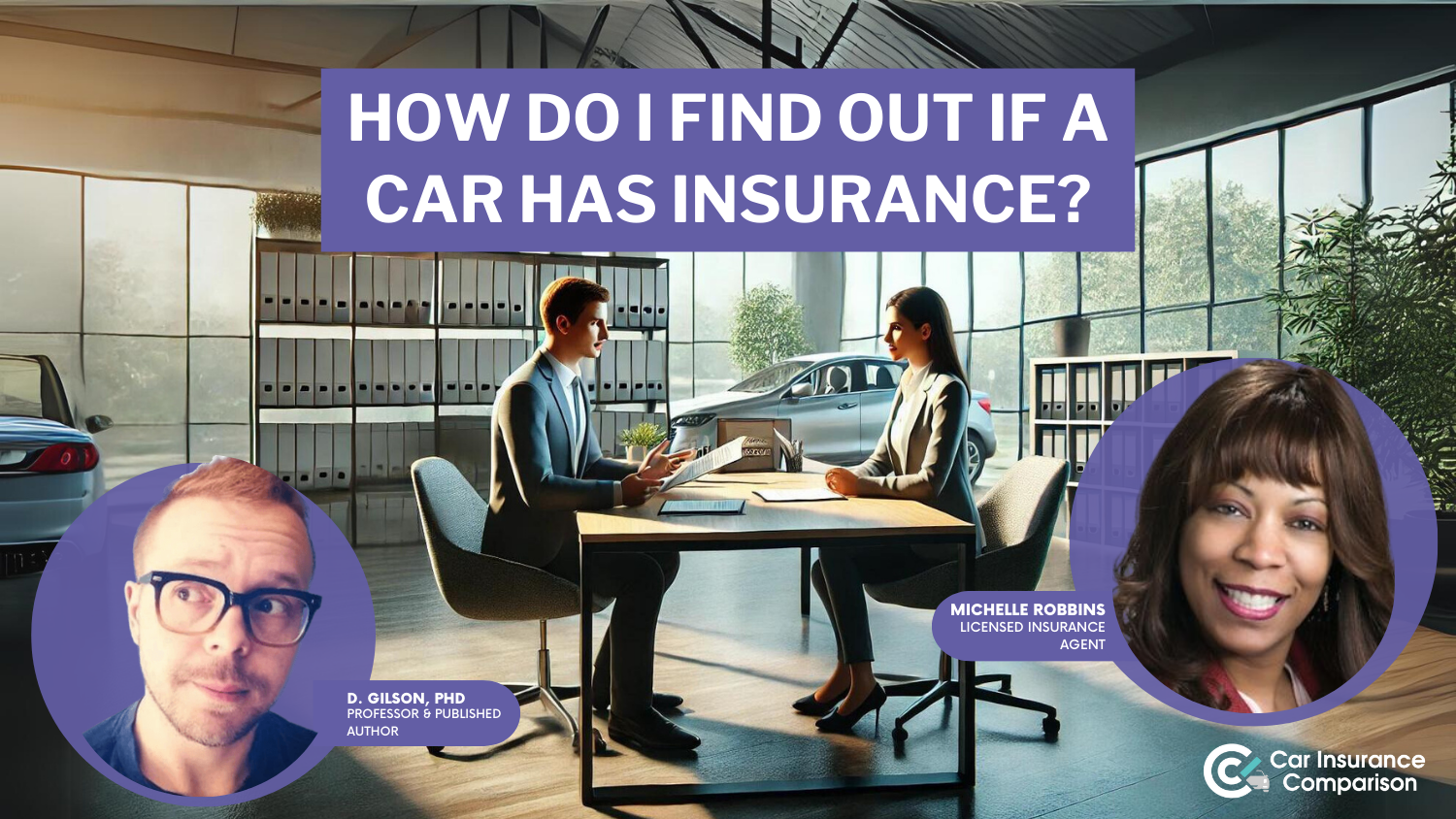
Frequently Asked Questions
How do I find out if a car has insurance?
To find out if a car has insurance, you can gather the vehicle and policy information from the owner and verify it through the car insurance company. Here are six ways you can gather the information you need:
- Ask the owner directly for proof of insurance or the declaration’s page.
- Verify the validity of the coverage provided by asking the owner to call the insurer.
- If you co-signed a loan or are the registered owner of the vehicle, you can call the insurance company directly.
- Check with the motor vehicle agency in your state to see if insurance is filed for the vehicle.
- Collect insurance information from the other party involved in an accident.
- If needed, contact law enforcement, traffic courts, the motor vehicle agency, or your insurer for information.
When do I need to check if a car is insured?
You may need to check if a car is insured in various situations, such as:
- Borrowing someone else’s car
- Being involved in an accident
- Verifying coverage for a vehicle you co-signed a loan on or own jointly
- Checking compliance with mandatory insurance laws
Can I trust the owner’s proof of insurance?
If you trust the owner, you can rely on their proof of insurance or declaration’s page. However, if you have doubts about the validity of the documents, it is recommended to ask the owner to call the insurer to verify the coverage.
How can I check the status of insurance on a vehicle I own?
If you co-signed a loan on a vehicle or you’re the registered owner, you can call the insurance company directly to check if the car is covered. However, you may need to provide proof of ownership to access policy information.
Can I check the insurance status of a vehicle through the motor vehicle agency?
Some states have electronic verification programs that allow owners to check if their vehicles have active insurance coverage. You can use the owner search tool provided by the motor vehicle agency in your state, typically requiring the license plate number and VIN, to verify coverage.
What should I do after an accident to obtain insurance information?
After an accident, it is essential to collect insurance information from the other party involved. You should gather details such as the name of the insurance company, policy number, and contact information to facilitate the claims process.
What should I do if I cannot obtain insurance information?
If the other driver runs or you are unable to collect insurance information, you have the right to seek information through law enforcement, traffic courts, the motor vehicle agency, or your insurer. The Drivers Privacy Protection Act allows access to insurance records in qualifying events like accidents.
Get a FREE Quote in Minutes
Insurance rates change constantly — we help you stay ahead by making it easy to compare top options and save.


